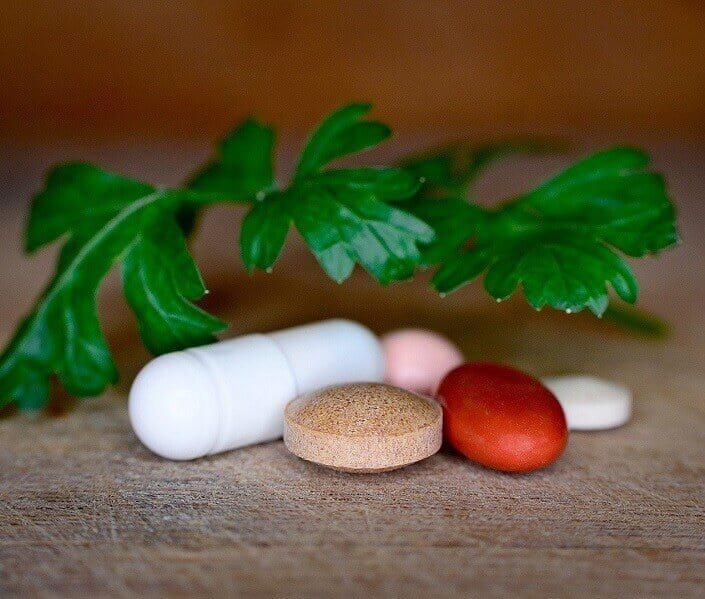4 mins read
Weight gain and perimenopause: why a calorie deficit may not be the answer

- Why am I gaining weight in perimenopause?
- What kind of weight gain does perimenopause cause?
- Why is it important to manage my weight during perimenopause?
- Why do some people turn to calorie deficits?
- So, what can I do instead?
Navigating perimenopause can be tricky, especially if you start to see your body change in ways you hadn’t expected. When trying to manage weight gain in perimenopause, some women may attempt to live in a calorie deficit – but this can actually put your body under extra stress and end up having the opposite effect.
This article explores why some women experience weight gain in perimenopause, why a calorie deficit may not be the answer and how Forth can help.
Why am I gaining weight in perimenopause?
Perimenopause is the transition phase in the lead-up to menopause, which is marked by 12 months of no period. Perimenopause itself doesn’t directly cause weight gain. Rather, changes in your hormone levels as you enter perimenopause alter the way your body processes food and stores fat.
As you age, your ovaries gradually slow down their functioning, lowering their production of oestrogen over time. This means that as women enter perimenopause, they have less oestrogen circulating around their body and more LH & FSH.
This drop in oestrogen causes lots of changes in the body, including:
- Changes in body shape and where fat is stored
- Loss of muscle mass
- Increased insulin resistance
- Changes to the gut microbiome diversity
- Changes to the metabolism
- Reduced sleep quality
Physical ageing throughout perimenopause can also impact weight gain, for example, due to changes in lifestyle patterns or activity levels. A woman’s resting energy expenditure (the calories you burn during rest) also declines later in life, meaning the body naturally burns fewer calories.
What kind of weight gain does perimenopause cause?
It’s important to remember that lower oestrogen levels in perimenopause don’t automatically cause weight gain. Instead, they change the way your body processes food and stores fat. As the ovaries produce less oestrogen, the body tries to make up for this by producing oestrogen from its fat cells, known as adipose tissue.
For most people, the majority of their body fat is subcutaneous – the type of fat that’s stored in a layer beneath the skin. But as women enter perimenopause, their bodies start to focus on storing more visceral fat. This type of fat is found deeper in the abdomen, between your organs and muscle tissue – and is more suitable for producing oestrogen. Research has shown that the number of visceral fat cells in the body doesn’t actually increase but each cell evolves to store more fat, improving their ability to produce oestrogen.
So, whereas female bodies are more likely to store fat around the thighs and hips earlier in life (as subcutaneous fat) – during perimenopause, they’re more likely to store fat around their torso (as visceral fat) therefore creating a different body shape.
Why is it important to manage my weight during perimenopause?
Each person will have their own relationship with their body and have different attitudes towards bodily changes during perimenopause.
From a physical perspective, gaining weight later in life can increase your health risks, including:
- Heart problems and cardiovascular disease
- Type 2 diabetes
- Stroke
- Osteoarthritis
That’s why it’s important to understand why your body is changing and how to adapt.
Why do some people turn to calorie deficits?
Throughout life, many women are subjected to social pressures to remain within an ‘acceptable’ body shape. Much of the advice around typical weight loss centres on two key pillars: move more and eat less. This means your body is burning more energy than it takes in, also known as being in a calorie deficit.
But why might this be counter-productive in perimenopause?
Perimenopausal bodies are already under stress due to hormonal changes, so putting yourself into a calorie deficit can actually push your body into survival mode. In survival mode, your body will try to conserve as much energy as possible by slowing the metabolism, burning muscle mass, and storing more fat. This means that going into a calorie deficit during perimenopause can actually make it more difficult to lose weight!
So, what can I do instead?
Rather than focus on eating less, managing your weight in perimenopause is all about eating a healthy, balanced diet and maintaining an active lifestyle. Because your body processes sugar and fat differently during perimenopause – eating wholesome, less processed foods is the first and most important step.
Examples of healthier options to help support your hormone balance include:
- Whole grains, nuts and seeds
- Fruit and vegetables
- Beans and legumes
- Lean proteins and healthy fats
Processed and high-sugar foods (such as sugary drinks, crisps, sweets and baked goods) are all examples of foods your body will find harder to digest in perimenopause.
For more information and advice on diet in perimenopause, check out our Menopause Diet Guide.
How can Forth help?
If you’re unsure if you’ve reached perimenopause yet, you can try our Perimenopause Symptom Tracker.
Alternatively, if you’re looking for more in-depth information about your hormone levels, why not try our new product, MyFORM®? A ground-breaking hormone test that maps your hormone fluctuations across your entire cycle, not just a single day. Helping you to understand if your symptoms could be due to perimenopause.
Author: Eleanor Riches.
This information has been medically reviewed by Dr Thom Phillips
Thom works in NHS general practice and has a decade of experience working in both male and female elite sport. He has a background in exercise physiology and has published research into fatigue biomarkers.

Dr Thom Phillips
Head of Clinical Services
Related articles
Like this article? Here are some more based on similar topics.



